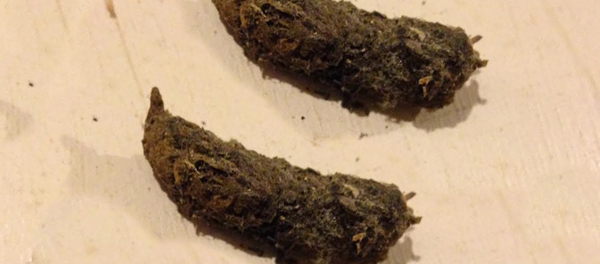- info@wildlife-removal.com
Call us for help in your town
Wildlife Removal Education
Is skunk feces dangerous to touch or breathe?
Need skunk removal in your hometown? We service over 500 USA locations! Click here to hire us in your town and check prices - updated for year 2020.
Studies have indeed revealed that skunk feces are dangerous if touched or inhaled from the air. Apart from having a characteristic stink, skunks carry several diseases that can be contracted by humans and domestic animals. The common modes of transmitting these diseases is by touching infected skunks, their
feces or inhaling the faeces from the air.

Identifying skunk feces
In order to avoid touching or breathing in skunk feces, you need to know what it looks like. Click here for Pictures of Skunk Poop - Skunk
feces are tubular shaped, about 1 inch in size and look just like cat faeces. They often have undigested food particles inside it – undigested insects parts, grass, nuts, seeds, feathers, berries and so on. Sometimes, the faeces may appear spotted just like the skunks themselves.
Diseases that can be contracted by touching or breathing skunk feces
There are quite a number of diseases that are associated with contact with skunk
feces. Some of them are airborne while others can be contracted via skin contact with skunk droppings or even their bodies. These diseases are;
Rabies – Skunks are only second to bats when it comes to animals that host the rabies virus. They are easily capable of spreading the lethal disease to humans and other animals. Although not all skunks are rabid, it is best to stay clear of them and watch out for signs of sickness.
Baylisascaris columnaris - This disease is also associated with skunks and can cause blindness, damage to liver, itching, brain dysfunction and ultimately death for sufferers.
Canine distemper - Canine distemper does not affect humans, it only affects animals. It can lead to bodily swellings, bodily discharge and death of the infected animal
Listeriosis - This affects both humans and animals, and it has been shown to cause itching, diarrhea, paralysis, brain swelling, and fatigue.
Other diseases that can be contracted from touching or breathing skunk feces are feline panleukopenia virus and equine protozoa myeloencephalitis.
To prevent contracting any of these diseases, you should always wear thick rubber gloves and nose covers when handling skunks. It does not matter if you plan to touch the faeces or not.
You should also make sure you disinfect your dogs or cats regularly. Make it a rule to disinfect any pet that has the characteristic smell of skunk over it.
Go back to the Skunk Removal page, or learn tips by reading How to get rid of skunks.
Skunk feces diseases - There are not many diseases associated with skunk feces. There is always a risk of Hantavirus from droppings in general, so you should not handle skunk poop without proper gloves and a mask. The real concern with skunks is the virus rabies. Next to bats and raccoons, skunks are in the top ten carriers of rabies in North America. While rabies is not transmitted in feces, it does come through the bite or a skunk or contact with infected saliva. Skunks can also be carriers of leptospirosis, a bacterial infection that affects most mammals. Dogs are susceptible to the disease as are people. Ask your veterinarian if you live in a leptospirosis endemic county. If you do, chances are your dog has been vaccinated against the sickness. There is no such vaccination for people, so you still need to be careful when loitering around stagnant ponds, puddles, and streams. Skunks also carry external parasites. Fleas and ticks will be a huge issue for both people and pets, and the instances of Lyme disease are expected to rise in 2018 due to the unnaturally warm weather across the country.


















